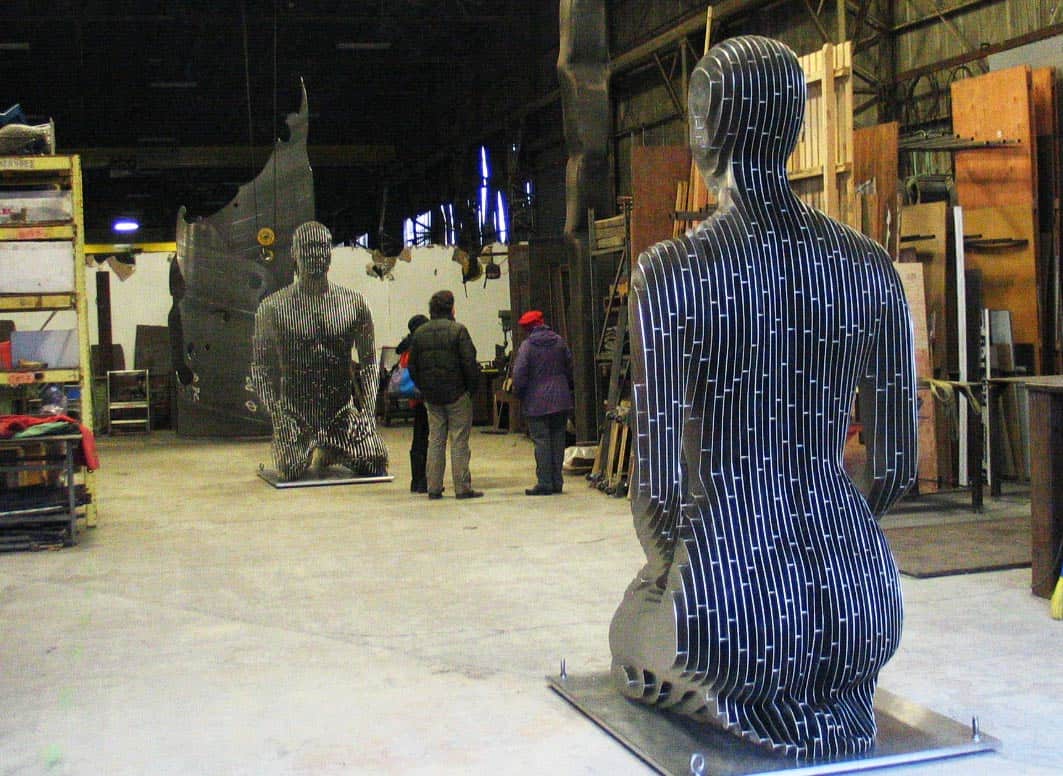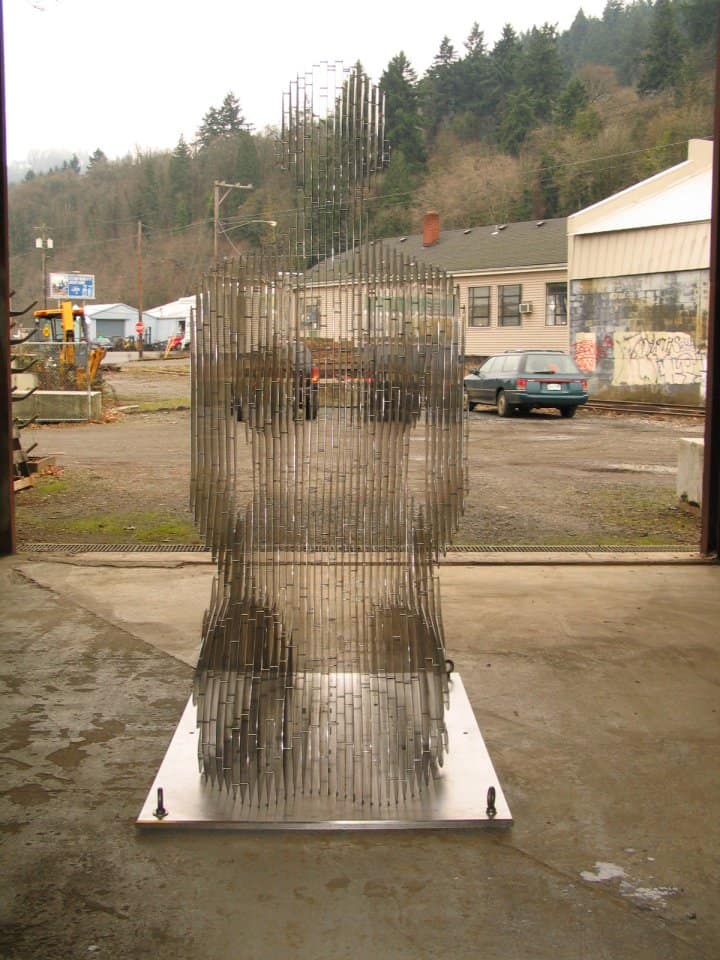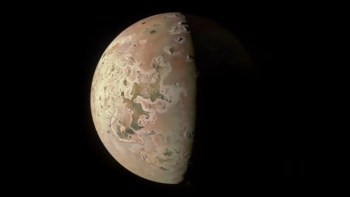
By Matin Durrani
I don’t know if they’re going to be dubbed “Alice” and “Bob”, but those names seem fairly appropriate for the two new figures – one male, one female – that make up the latest artwork from the German-born quantum-physicist-turned sculptor Julian Voss-Andreae.
Set to be installed at a new physics and nanotechnology building at the University of Minnesota in Minneapolis-St Paul, the work is officially titled Spannungsfeld – a German term that literally means “tension field” and which implies, according to Voss-Andreae, a “dynamic tension, often between polar opposites, that permeates everything in its vicinity”.

Each of the 3 m-high kneeling figures weighs about 1400 kg and will be installed on a 5000 kg granite plinth. They will be positioned about 20 m apart and gazing directly at each other. But rather like Voss-Andreae’s 2006 sculpture Quantum Man, his new work has been built so that both figures “disappear” when viewed side on. That’s because they’re actually created from 150 thin, polished steel slices connected by pins.
I haven’t seen the artwork myself, but Voss-Andreae promises that light shining through the sculpture will give the work a “surprising, almost otherworldly, quality”. When someone passes by the sculpture, a viewer on the other side sees “a blurry reflection of that person moving through the sculpture, even when the metal completely blocks any direct view of the passer-by”. Much of the light hitting the sculptures will “reflect off the slices’ clean, laser-cut edges, which shimmer as the viewer passes by”.
You can see Spannungsfeld for yourself when it’s installed next month and an official unveiling ceremony for the new building and the sculpture will take place in April. Meanwhile, you can learn more about Voss-Andreae’s work in this great article entitled “Quantum of culture” by Physics World columnist Robert P Crease.



